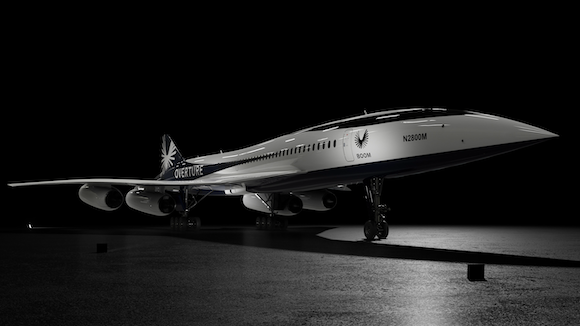Boom Supersonic propulsion system to leverage AM with GE Additive
December 19, 2022

Aerospace company Boom Supersonic, Denver, Colorado, USA, has announced the concept for a new propulsion system, Symphony, which was designed and optimised for its Overture supersonic airliner and will utilise Additive Manufacturing for low weight, low part count, and reduced assembly costs. The company announced that it will be collaborating with three industry leaders to develop Symphony, including GE Additive for consultancy on design for AM (DfAM), Florida Turbine Technologies (FTT) for engine design, and StandardAero for maintenance.
Overture is intended to carry sixty-five to eighty-eight passengers at twice the speed of today’s airliners. Designed to run on 100% sustainable aviation fuels, Overture is expected to be the first large commercial aircraft to be net-zero carbon from day one. The supersonic airliner is set to enter manufacturing in 2023, roll out in 2025, and begin flying passengers by the end of the decade.
The Symphony propulsion system will have a bespoke design that leverages technologies and materials to achieve optimal supersonic performance and efficiency. The new propulsion system will reportedly operate at net-zero carbon and meet Chapter 14 noise levels, and when compared to derivative approaches, it is expected to deliver a 25% increase in time on wing and significantly lower engine maintenance costs, reducing overall airplane operating costs for customers by 10%.
“Developing a supersonic engine specifically for Overture offers by far the best value proposition for our customers,” stated Blake Scholl, founder and CEO of Boom Supersonic. “Through the Symphony programme, we can provide our customers with an economically and environmentally sustainable supersonic airplane – a combination unattainable with the current constraints of derivative engines and industry norms.”
Symphony development partners
Boom announced that GE Additive will collaborate on the Symphony programme, bringing its long history of experience in designing additively manufactured engine components — enabling more streamlined development, reduced weight, and improved fuel efficiency.
“We are excited to support Overture and Symphony,” said Chris Schuppe, General Manager Engineering and Technology at GE Additive. “GE Additive will bring industry-leading capabilities to Symphony, providing additive manufacturing design consulting and technology, while looking for additional areas to potentially collaborate.”
Boom has also selected Florida Turbine Technologies, a business unit of Kratos Defense & Security Solutions, Inc., as its engine design team. FTT has leading supersonic engine design expertise, including key engineers among the team responsible for the design of the F-119 and F-135 supersonic engines that power the F-22 and F-35.
Additionally, StandardAero, one of the aerospace industry’s largest independent maintenance, repair, and overhaul (MRO) providers, will ensure that Symphony is designed for maintainability. Boom’s collaboration with StandardAero aims to deliver reliable and economical operations, and provision of maintenance services for the life of the aircraft. Boom will also benefit from StandardAero’s experience as an assembler of supersonic engines.
Symphony system architecture
The Symphony propulsion system will be a medium-bypass turbofan engine with the same basic engine architecture that currently powers all modern commercial aircraft. Unlike subsonic turbofans, this new propulsion system will include a Boom-designed axisymmetric supersonic intake, a variable-geometry low-noise exhaust nozzle, and a passively cooled high-pressure turbine.
Engine design features reportedly include:
- Architecture: twin-spool, medium-bypass turbofan engine, no afterburner
- Thrust: 35,000 lbs at takeoff
- Fuel: optimised for 100% sustainable aviation fuel
- Single-stage fan designed for quiet operation
- Passively cooled high-pressure turbine
- Certification: compliant with FAA and EASA Part 33 requirements
With Symphony design already underway, Overture is said to be on track to achieve type certification in 2029. Production is set to commence in 2024 at Overture’s Superfactory in Greensboro, North Carolina, USA, with rollout in 2026 and first flight in 2027.
















